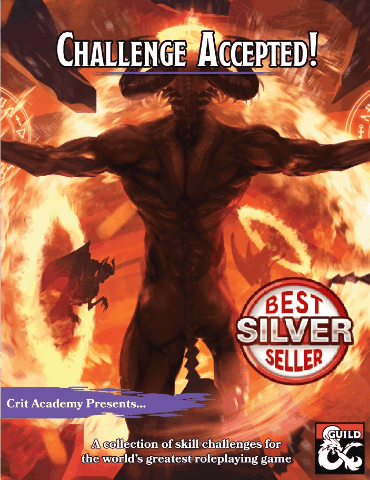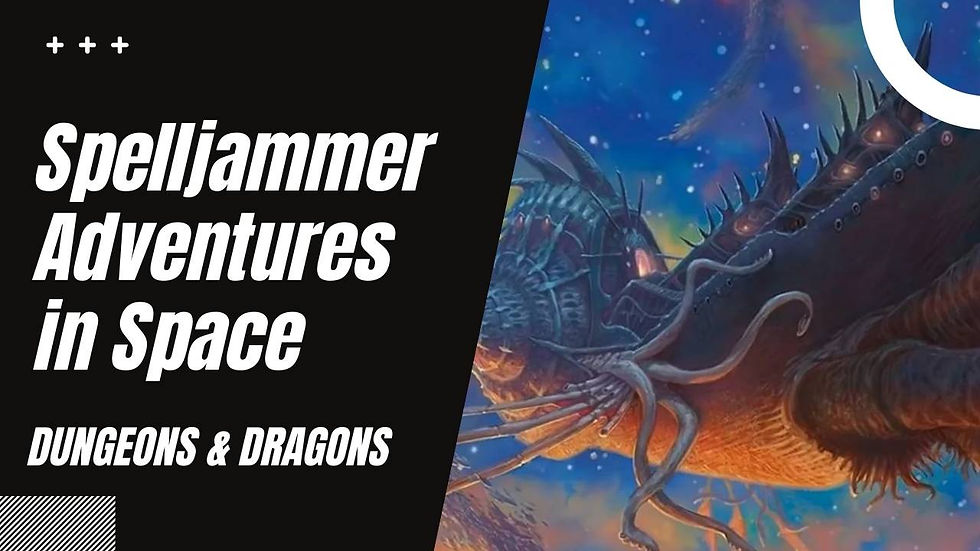5 Easy Ways I Make my D&D Games Awesome for my Players
- Justin Handlin

- Nov 8, 2021
- 4 min read
Updated: Nov 14, 2021

Dungeons & Dragons is a complex game. This means being a Dungeon Master requires a bit of homework to really understand and get the most out of the game. While the books do a great job of breaking down the rules and details of running a game for your friends. Over the years there are some little tips that I've learned that just make my game better for all of us. So, here is a list of '5 Easy Ways I make my D&D Games Awesome for my Players'.
Free Speech Phase
Think of your favorite intense battles in popular fiction. The hero and villain lock swords, and they taunt or plead with each other between sword blows or the villain begins monologuing as the battle rages on.
The current DnD ruleset doesn’t exactly allow for this type of situation to happen smoothly in combat. We recommend at the end or the start of every initiative round add a special phase. the players (and NPCs) can speak freely amongst themselves before starting the next round.
The players and NPCs can use this to discuss tactics, ridicule each other, or even have NPCs provide commentary. Whatever you use it for, it’s a quick and easy way to make your battles more cinematic and memorable.
Who’s That Monster?
“You hear a noise from the shadows, and the Medusa hiding behind a corner pulls out a bow and fires at you!” One player immediately perks up and says, “Oh, a Medusa? They can petrify you with their gaze, so I’m going to close my eyes and attack blindly.”
If the PC’s have never encountered a specific monster and/or have no reason to know what the monster is, then saying the name of the monster can be a mistake. Instead, Try referring to them by their appearances. A Medusa might be “a scaly-skinned woman with snakes slithering around her face. The PC’s can make skill checks to identify monsters, but that information shouldn’t be offered up immediately or without request. Once the PC’s encounter the monster for the first time, feel free to let them know any information they need during the next encounter, as is appropriate. This will create a much more visual experience for all the players.
Give Non-Treasure Rewards
Getting treasure is awesome, but treasure comes and goes. If you complete a quest for the king and receive a thousand gold pieces, that’s cool, but what if, instead, you’re granted a title? Or maybe a plot of land? What if a parade is arranged in your honor? Non-treasure rewards can be so much more interesting and life-altering than another thousand gold. Titles can be something that exemplifies your character’s traits (such as “Champion” or “Archmage”), and plots of land can be turned into strongholds and/or businesses (which could then generate more income for your players in the long run). Parades or feasts in your honor can be great plot hooks and can lead to plenty of adventures in the future!
Wandering Monsters...What are they doing?
Everyone knows that the best dungeons are populated by wandering monsters, who might show up if the party lingers too long in one area. It could be easy to just roll on a chart, generate a monster, start a fight, and go from there- but is that all it could be?
Try thinking about exactly what the monsters are doing while they’re wandering. Are they gathering food? If so, the party might be able to trade them food in exchange for letting them pass. Are they scouting? If so, spotting the party means that a later encounter might be bigger or smaller (depending on whether word got back to the rest of the monsters). Is the monster taking a break from its duties, and might it be reprimanded by its superiors if anyone found out? Might it be delivering a message or item that the party can intercept? Or could the monsters be searching for someone or something that the party might have found along the way?
If you simply roll an encounter without thinking about it further, you’re taking the potential for an interesting, dynamic dungeon and reducing it to its base value.
Change Monster Hit Points
When you use monsters straight out of the Monster Manual, they will most likely all have average hit points (as are included in their stat block). Most players will be expecting this, whether consciously or not. Instead of using the average, why not try changing it up? In a fight with a group of bandits, the first one might go down in one hit, the next one in two hits, and the one after that in three (simply because the three bandits started with different Hit Point maximums). It will definitely keep the encounter from feeling like everything is a stock-standard, cookie-cutter NPC.
If you do vary enemy hit points, try describing each of them slightly differently to clue this into the players. Maybe one of the bandits is wearing shiny metal armor while another is wearing rusty and ill-fitting armor. Maybe one of them has a noticeably bigger and more solid torso while the other is scrawny and sickly. Even though they were built with the same stats, a description like that immediately gets across that one of them will be a bit tougher than the others.
These simple tricks have made games more immersive, memorable, and overall just a lot more fun. Not every trick will work for every table. But I encourage you to give them a try and see if any are a fit for your Dungeons & Dragons table!
NOW @ 97% with 3 Days Left! BACK IT NOW!

Extraordinary Expeditions is a series of adventure modules designed to be used with 5th Edition. The goal is to provide a simple, flexible set of adventures that can easily be integrated into any campaign world. This is not a "campaign module", but is instead a collection of modular adventures that can be used in any setting and in any order. Back this project NOW and get a FREE adventure today!
Thank you for reading our blog. If you enjoy the content and want to support us, visit our store or follow us on social media, join us on discord, youtube, and leave us a review.
Keep your blades sharp and spells prepared heroes!
*Crit Academy is an Affiliate of Amazon, DMsguild and DriveThruRPG*















What this ariticle is talking about is how to make a campaign into a living world. When a GM does this successfully, the campaign can take on a life of its own, generating ideas for both the GM and the players which, in turn, feeds more adventure ideas to the GM. In fact, one of the best ways to engage the players is to have a NPC run by the GM as if it was the GM's character. Doing so can build campaign engagement with the players if they grow to think of the NPC as one of their own. You know you've been successful as a GM with your NPCs when the NPC dies and the players are stunned…